
June 9, 2017, by Shirlene Campbell Ritchie
Preparing for the grand debut
Dr Wang Qi recounts his recent trip to Beijing where he caught up with technicians at the Institute of Vertebrate Palaeontology and Palaeanthropology in Beijing, to see how the fossils were prepared for their grand unveiling at the Dinosaurs of China exhibition
Earlier in May, the brightly lit laboratory at the Institute of Vertebrate Palaeontology and Palaeanthropology (IVPP) was a hive of activity when fossil preparation technicians were hard at work.
Dr Wang Qi, Assistant Professor of Architecture in the Department of Architecture and Built Environment, dropped by to see how the technicians were getting on.
With their heads down and eyes focused, the team of 10 technicians cleaned and restored fossils of all kinds in all shapes and sizes using a wide variety of techniques, materials and equipment.
‘The amount of information that scientists can glean from a fossil depends on how it’s prepared. This is where the role of the preparation technician is key. They are the first ones to touch the fossils and all fossils must go through the technicians,’ explained Dr Wang.
The work itself involves, cleaning, preserving and repairing the fossils. Preparation involves many skills and it begins when the fossil is excavated from the ground. It continues in the laboratory and never really ends because the specimen will require care throughout its life. On site at the dig, they start by pouring plaster of Paris on the rock to create a cast that protects the fossil while it’s dug out of the ground and in transit.
Once in the lab, the technicians use various methods to remove the earth around the fossil, which is known as the rock matrix. The matrix is removed manually or with a chemical treatment. The work is time-consuming and it calls for the use of needles, tweezers and a dust blower. The choice of tool is determined by the condition of the fossil and the characteristics of the matrix.
‘The team of technicians at IVPP were the ones who retrieved and restored the feathered dinosaurs. Of course, vertebrate and larger fossils require more time and energy to clean – in fact, it took an international team two years to restore the sinraptor,’ said Dr Wang.
‘In inexperienced hands, finer details like the feathers may be lost, so the technicians use bright lights, magnifying glasses and microscopes to avoid damaging the fossils. There’s nothing worse than poking a hole in a fossil!’ added Dr Wang.
Fossil preparators as they’re sometimes known, help to build up our base of knowledge for further study. They are trained in techniques for the preparation of specimens and the technicians at IVPP have come from a long and distinguished tradition where masters have passed their skills on to apprentices.
‘The importance of the work carried out by fossil preparation technicians cannot be underestimated,’ stressed Dr Wang.
‘One of the greatest palaeontology hoaxes of all time involved the Archeoraptor. The fossil, which was introduced in 1999, was hailed as the missing evolutionary link between carnivorous dinosaurs and modern birds. However, it was fairly quickly exposed as a forgery made up of the head and body of a primitive bird known as Yanornis and the tail of a dromaeosaur dinosaur known as a Microraptor – all of which were glued together by a farmer. You can see all the three species in the specimen which will be on display at the Dinosaurs of China exhibition.
‘The incident only served to highlight the importance of the technicians’ role in conserving fossils and protecting them,’ added Dr Wang.
Watch this space for an update when we take a behind the scenes look at the set up for the Dinosaurs of China exhibition.
About the Dinosaurs of China
Dinosaurs of China is a one-time only world exclusive exhibition of dinosaurs, which will be coming to the UK for the first and only time this summer.
Taking place from 1st July to 29th October 2017, the event will be held at Wollaton Hall in Nottingham and The University of Nottingham’s public art centre, Lakeside Arts. It will be the only time that visitors can see this vast selection of fossils and skeletons outside of Asia.
The exhibition will bring to life the history of how dinosaurs evolved into the birds that live alongside us today and will feature some of the biggest dinosaur skeletons in existence.
For more information, visit: http://www.dinosaursofchina.co.uk/news/dinosaurs-of-china-film/
No comments yet, fill out a comment to be the first

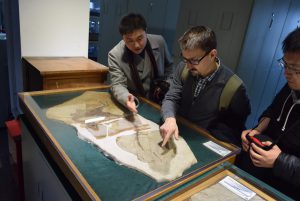
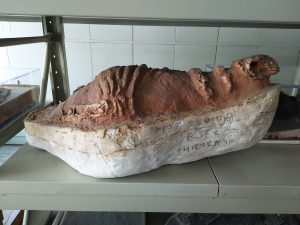
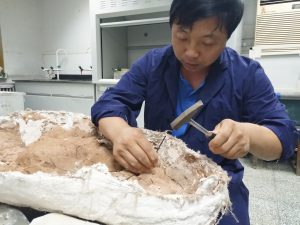
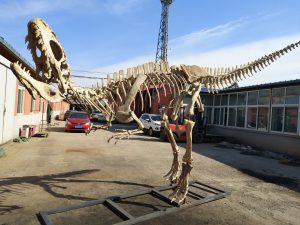
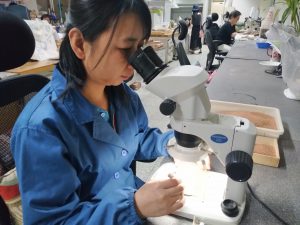
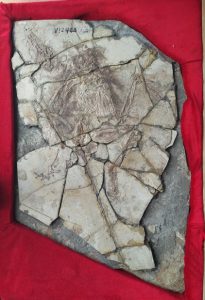
Leave a Reply